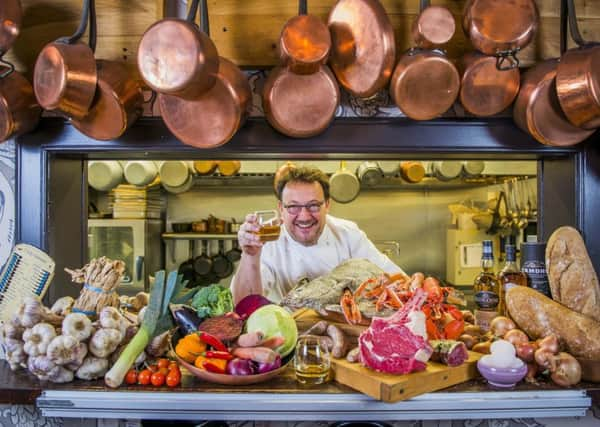Scotland aims to double up on food and drink revenue
This article contains affiliate links. We may earn a small commission on items purchased through this article, but that does not affect our editorial judgement.


Scotland’s food and drink industry has been one of the real stand-out business success stories in recent years, supporting hundreds of firms from the major whisky distillers to small-scale artisan suppliers.
Exports have helped fuel stellar growth within the sector and now industry leaders have drafted a blueprint with the ambitious aim of more than doubling turnover to £30 billion by the end of the next decade.
Advertisement
Hide AdAdvertisement
Hide Ad• READ MORE: UK food and drink sales hit £20bn across the world
The appropriately named “Ambition 2030”, which was launched to much fanfare yesterday, will focus on building Scotland’s national brand as a “Land of Food and Drink”, driving sales not only north of the Border, but across the rest of the UK and globally.
Currently, the sector is worth just over £14bn in annual revenues, some 119,000 people are working directly in the industry and food manufacturing in Scotland is growing at twice the rate of the UK average. Industry body Scotland Food & Drink is confident that its plans will see those numbers accelerate over the next 13 years and it has developed a strategy that will focus on three key areas.
The first of those deals with “people and skills”. Industry leaders are looking to raise attractiveness of the sector as a career destination while investing in the existing workforce. There is likely to be a challenge there as pay has often been at the bottom end of the scale while Brexit uncertainties have raised concerns over the future supply of European migrant workers.
Secondly, a focus on the supply chain – ensuring farmers, fishermen, manufacturers and buyers work in closer partnership, with the goal being greater profitability shared across the industry. And the third key area identified in the bold growth plan is innovation – embracing “a new culture of developing new products and processes to drive growth”.
The strategy has been developed by Scotland Food & Drink Partnership, an industry-led initiative bringing together the main organisations in the farming, fishing, food and drink sectors, alongside the Scottish Government and key public sector agencies.
In addition to those three key areas, the industry has made a renewed commitment to “responsible growth”, pledging to deliver broader benefits to the country beyond just a hike in collective turnover. This includes an offer of a new partnership with government and its agencies to drive improvements in Scotland’s health and wellbeing and to commit again to embracing “world-leading” standards of environmental sustainability.
Advertisement
Hide AdAdvertisement
Hide AdJames Withers, Scotland Food & Drink’s chief executive, says the 2030 strategy has identified collaboration as the most important ingredient in the sector’s success to date, with plans to strengthen those public-private relationships in the coming years.
“Ten years ago, when the Scotland Food & Drink Partnership was formed, our sector was relatively static. It is now one of the country’s best performing industries and it’s our fastest growing export sector. However, today sets out a new vision to build further on that,” says Withers.
“As an industry, we have identified an opportunity to more than double the size of our sector to £30bn by 2030, making it Scotland’s most valuable industry. A huge amount of work is required to unlock that potential and it will not come easily. There is uncertainty ahead, with Brexit in the forefront of everybody’s mind. Whilst big political upheavals are out of the industry’s control, we can control how we develop the Scottish brand, the markets we want to sell to and the investments we make in improving skills, innovation and supply chains.”
He adds: “It will take a huge amount of dedication from industry, government and its agencies, but working collaboratively, there is every reason we can make Scotland the best place in the world to run a food and drink business.”
The Ambition 2030 strategy has been endorsed by bosses of the industry’s single biggest sub-sector – Scotch whisky production, which already accounts for around three-quarters of Scottish food and drink exports.
Julie Hesketh-Laird, acting chief executive of trade organisation the Scotch Whisky Association, says: “Scottish food and drink is of significant importance to the country’s economic and export performance, with Scotch Whisky playing a leading role in growing the industry further.
“The new strategy will ensure that the whole sector will become even more substantial in years to come. And we’re confident Scotch whisky will remain the biggest contributor to the sector.”
Regardless of which direction Scotland’s political future takes, its burgeoning food and drink sector is likely to prove critical to its prosperity.